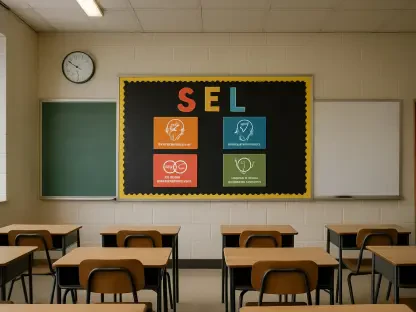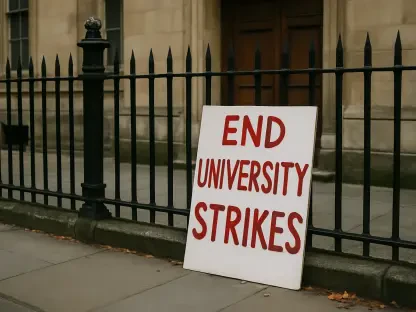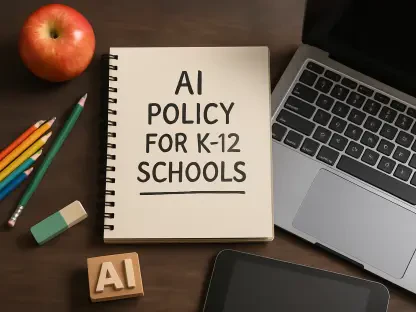As student debt continues to intensify, a novel approach to educational financing is emerging that promises significant change and relief for college students. Zero-interest, no-fee loans, backed by philanthropies and private enterprises, are paving the way for a future without crippling debt burdens. Unlike traditional loans, these financial models are characterized by repayment terms tied to salary thresholds, ensuring that repayments only begin when students secure employment. This approach not only mitigates financial strain but also adapts to the realities of student life, particularly for those nearing graduation with unresolved financial needs. The initiative extends beyond immediate financial relief, promising a sustainable mechanism where repaid funds are reinvested in supporting future students, creating a cycle of aid that contrasts sharply with the prohibitive conditions of conventional loan systems. This innovative movement resonates deeply with cultural values of mutual support, as seen in communal societies, and seeks to blend private generosity with pragmatic financial strategies to enhance accessibility and completion rates of higher education. As pilot programs unfold across various states, they are tailored to address specific employment demands in critical fields, aligning education with occupational needs and illustrating potency for widespread adaptation.
Innovative Loan Structures and Their Implications
Zero-interest, no-fee loans represent a departure from traditional student financing methods that often leave graduates saddled with daunting debt. By structuring repayment to activate only after graduates earn a minimum salary threshold, typically above $50,000, this model ensures that repayments do not commence until they are financially stable. This means students can focus on completing their education without the looming threat of immediate debt repayment. Moreover, the inclusion of employer participation, where some businesses assist with repaying these loans, further integrates educational outcomes with career development. This symbiotic relationship between educational institutions and economic entities highlights the need for a collective approach to easing student debt. Additionally, the “pay-it-forward” aspect, where repaid loans fund future students, revolutionizes how financial aid perpetuates itself, allowing for a more sustainable and renewable financial support system. This model’s framework delineates a path where private funds and charitable contributions are efficiently utilized, establishing it as a potential blueprint for public sector adoption and scalability.
Furthermore, the system’s design is aligned with addressing specific workforce needs, ensuring that students entering fields with high demand receive targeted support. By focusing financial support on disciplines such as engineering, healthcare, and information technology, this initiative also seeks to bridge gaps between education and employment sectors. This reflectivity of economic needs in education financing forms a cornerstone in harnessing financial aid not just as a tool for alleviation but as a strategic investment that benefits individual learners and broader community development. The impact is dual-faceted: it alleviates students’ financial burdens while simultaneously addressing workforce shortages critical to economic growth. However, underlying these promising features is a challenge in winning student trust—communities accustomed to rigorous loan terms can exhibit skepticism underpinned by apprehensions related to perceived financial complexities. Overcoming this distrust and cultivating an understanding of this model’s benefits requires comprehensive outreach and education to ensure broad acceptance and participation.
Cultural Resonance and Public-Private Collaboration
The zero-interest, no-fee loan model aligns with cultural values prioritizing collective welfare over individual gain. This aspect particularly resonates in states known for their strong communal ethos, such as Hawaii, where shared success and mutual aid define much of the cultural landscape. The financing approach mirrors these values by implementing a system where the successful repayment by one student directly contributes to another’s financial support, embodying a cycle of communal advantage. This intrinsic alignment with cultural ideals not only facilitates adoption but also strengthens the community engagement necessary for sustained operations of these programs. Beyond cultural resonance, the success of such initiatives hinges significantly on collaborations between private entities and public institutions. As pilot programs unfold, they necessitate substantial private funding and charitable contributions. This reliance, characterized by investment from philanthropies and private businesses, forms the foundation upon which these initiatives are built. However, the long-term success and expansion of these programs will depend upon the inclusion of public sector support, necessitating strategic partnerships that demonstrate program efficacy to potential government supporters.
The showcasing of positive outcomes from localized pilot efforts serves as a crucial step in securing broader backing. Demonstrating reduced student debt levels and successful student transitions into stable employment can significantly bolster the appeal to governmental agencies contemplating similar models. This requires not only quantitative data showcasing fiscal benefits but also qualitative narratives highlighting individual success stories and community-wide impacts. The symbiosis of private generosity and potential public backing offers a promising route to educational reform, enabling the widespread adoption of zero-interest models across diverse geographic and socioeconomic spectra. Moving forward, integrating thought leadership from financial experts, educational stakeholders, and community advocates will be essential in refining program structures and expanding reach. Collaboration thus becomes a pivotal element, influencing legislative agendas, shaping policy evolution, and establishing frameworks for public-private partnerships that drive transformative educational financing solutions.
Financial Accessibility and Workforce Development
The crux of zero-interest, no-fee loans revolves around transforming the accessibility of higher education by significantly reducing the financial burdens that typically deter completion. These innovative loans directly confront the challenging dynamics of student debt, removing interest barriers that often encumber graduates long into their careers. By eliminating interest, students are presented with a starkly contrasted path, wherein they pursue their academic goals without the prohibitive pitfalls associated with standard financing mechanisms. This model not only enhances completion rates—it cultivates a workforce that is more ready to actively engage with the demands of their chosen industries upon graduation. Moreover, aligning financial aid structures with employment needs represents a calculated investment in both individual educational outcomes and broader economic vitality.
Effectuating such alignment requires precise data analysis and responsive program tailoring to the workforce demands inherent in each state or region, a task undertaken with the pilot programs spread across various states. By strategically directing aid toward students pursuing careers in critically needed fields, such as STEM and healthcare, the zero-interest initiative becomes a vital contributor to mitigating workforce shortages. This strategic direction underscores a consensus that education and economic development are intrinsically linked, creating a foundation where institutions of higher learning and employment sectors collaboratively address skills and labor deficits. The benefits ripple outward, establishing empowered graduates while simultaneously fortifying economic structures with skilled labor capable of driving innovation and growth. This comprehensive approach reflects an evolving understanding of financial aid, not merely as a funding source but as an essential strategy in cultivating a robust workforce responsive to the state’s advancing industry dynamics.
Pathways to Broader Impact
Zero-interest, no-fee loans mark a shift from traditional student financing, which often burdens graduates with substantial debt. Loans require repayment only after graduates begin earning a minimum salary, generally over $50,000. This approach ensures that students can complete their education without the immediate pressure of debt, allowing them to focus on their studies. The system also encourages businesses to help repay these loans, creating a link between education and career development. Such collaboration between educational institutions and businesses underscores the need for a shared approach to reducing student debt.
Additionally, this model introduces a “pay-it-forward” mechanism; as loans are repaid, they fund future students, creating a sustainable financial aid cycle. This model uses private funds and charitable donations effectively and could serve as a model for public sector initiatives. It aligns educational support with workforce needs, providing aid for students in high-demand fields like engineering, healthcare, and IT. By doing so, it not only eases student financial burdens but also addresses workforce shortages, thus contributing to economic growth.
However, earning student trust remains a challenge. Communities accustomed to strict loan conditions might be skeptical about the new model due to perceived financial complexities. To gain acceptance, extensive outreach and education are essential to demonstrate the benefits and feasibility of this innovative system.









